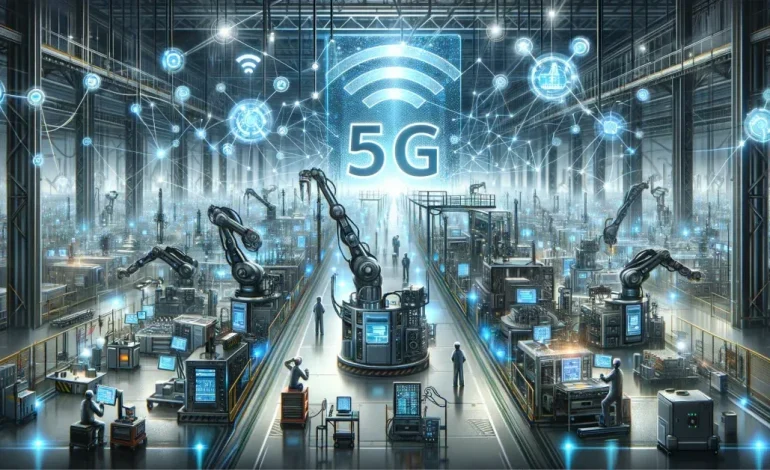Shenzhen’s 5G Innovation Zone Attracts 300 Firms

Introduction
Shenzhen’s newly established 5G Innovation Zone has attracted over 300 companies in Q3 2025, marking a significant milestone in China’s push for advanced connectivity and smart city development. According to the Shenzhen Municipal Bureau of Industry and Information Technology, the zone now hosts domestic and international firms focused on AI, IoT, autonomous vehicles, and cloud services. The initiative is part of the city’s broader strategy to integrate high-speed 5G networks with industrial applications, fostering innovation and supporting the growth of next-generation technologies.
Overview of the 5G Innovation Zone
The 5G Innovation Zone spans 12 square kilometers in the Nanshan and Futian districts, strategically located near Shenzhen’s technology parks and research institutions. The zone offers high-speed 5G infrastructure, testing labs, co-working spaces, and dedicated support for startups and established firms. According to the Shenzhen Municipal Bureau, companies in the zone are leveraging ultra-low latency networks to deploy smart manufacturing solutions, autonomous delivery systems, and real-time data analytics for urban planning.
Liu Ming, Director of the Shenzhen Innovation Bureau, stated, “Our 5G Innovation Zone is designed to create a collaborative ecosystem where startups and tech giants can test, scale, and commercialize solutions. The integration of connectivity, AI, and IoT enables rapid deployment of technologies that were previously confined to lab settings.”
Key Industries and Applications
The zone has attracted a wide range of industries. Major sectors include:
- AI and Big Data: Firms are deploying AI algorithms for predictive analytics, supply chain optimization, and smart city applications.
- Autonomous Vehicles and Drones: Startups are testing self-driving cars, delivery drones, and smart traffic management systems on 5G-enabled streets.
- Smart Manufacturing: Factories utilize 5G networks to connect machinery, enable real-time monitoring, and implement predictive maintenance.
- Telemedicine and Health Tech: Hospitals and clinics are piloting remote diagnostics, virtual consultations, and real-time data monitoring using high-speed connectivity.
- AR/VR and Interactive Media: Entertainment and education companies leverage 5G for immersive virtual experiences, enabling remote collaboration and training.
The combination of these industries demonstrates the zone’s potential to transform Shenzhen into a global hub for next-generation technology development.
Company Participation and Investment
According to the Shenzhen Municipal Bureau, 300 firms have established operations within the zone, including prominent Chinese technology giants such as Huawei, Tencent, and DJI, as well as smaller startups specializing in AI-driven solutions and IoT devices. Foreign firms from Singapore, South Korea, and Germany have also set up research and development centers to test 5G-enabled products in a real-world environment.
Investment into the zone is estimated at over $2.5 billion for infrastructure, research, and pilot projects in Q3 2025. Firms benefit from government grants, tax incentives, and preferential access to 5G testing networks. Zhang Lei, a technology analyst at China Tech Research, noted, “The concentration of firms and capital in the 5G Innovation Zone accelerates innovation cycles. Collaboration between multinational companies and local startups creates synergies that benefit the entire ecosystem.”
Technological Advantages and Innovations
The 5G Innovation Zone leverages ultra-low latency, high bandwidth, and massive device connectivity to support applications that traditional networks cannot handle efficiently. Companies report that latency for autonomous vehicle testing has decreased to under 10 milliseconds, enabling safer and more reliable navigation systems.
Startups are also deploying AI-driven predictive maintenance tools in manufacturing plants, analyzing data from hundreds of sensors in real time. Cloud-based solutions within the zone allow firms to scale operations quickly without investing in costly physical infrastructure.
The zone additionally hosts specialized laboratories for quantum computing integration, blockchain applications, and modular financial systems, providing firms with access to cutting-edge experimental platforms.
Impact on Shenzhen and National Development
The 5G Innovation Zone is expected to strengthen Shenzhen’s role as a leading technology hub in China, complementing other initiatives such as the Greater Bay Area development plan. By attracting high-tech firms and fostering collaboration, the zone is creating new jobs, stimulating innovation, and contributing to local economic growth.
According to municipal reports, the zone has already generated over 15,000 direct employment opportunities and indirectly supports additional jobs in logistics, service industries, and research institutions. Analysts highlight that the zone’s success may serve as a blueprint for other cities in China seeking to combine advanced connectivity with industrial innovation.
Challenges and Considerations
Despite its early success, the zone faces challenges including high infrastructure costs, cybersecurity concerns, and the need for continuous talent development. Ensuring reliable network coverage and managing data privacy for connected devices remains critical.
Liu Ming emphasized, “We are investing in cybersecurity infrastructure, staff training, and educational partnerships to ensure that the benefits of 5G deployment are realized safely and sustainably. Continuous innovation must be balanced with responsible management.”
Future Outlook
Analysts expect Shenzhen’s 5G Innovation Zone to expand further in 2026, attracting over 500 firms and increasing investment in research and deployment of advanced technologies. Potential applications include cross-industry collaboration, real-time urban monitoring, AI-enabled logistics networks, and enhanced telemedicine platforms.
Emerging initiatives are exploring integration with digital finance solutions, such as blockchain-enabled trade settlement and real-time smart contracts. These applications have the potential to accelerate innovation, improve operational efficiency, and support China’s broader goals of a digitally integrated economy.
Conclusion
Shenzhen’s 5G Innovation Zone demonstrates the transformative potential of next-generation connectivity in driving industrial innovation, AI deployment, and smart city development. With over 300 firms participating, the zone provides an ecosystem that combines high-speed networks, advanced technologies, and government support. While challenges such as cybersecurity, infrastructure costs, and talent availability persist, early results indicate strong adoption and measurable benefits. The initiative positions Shenzhen as a global leader in 5G-enabled innovation, serving as a model for technology-driven urban and industrial development across China.






